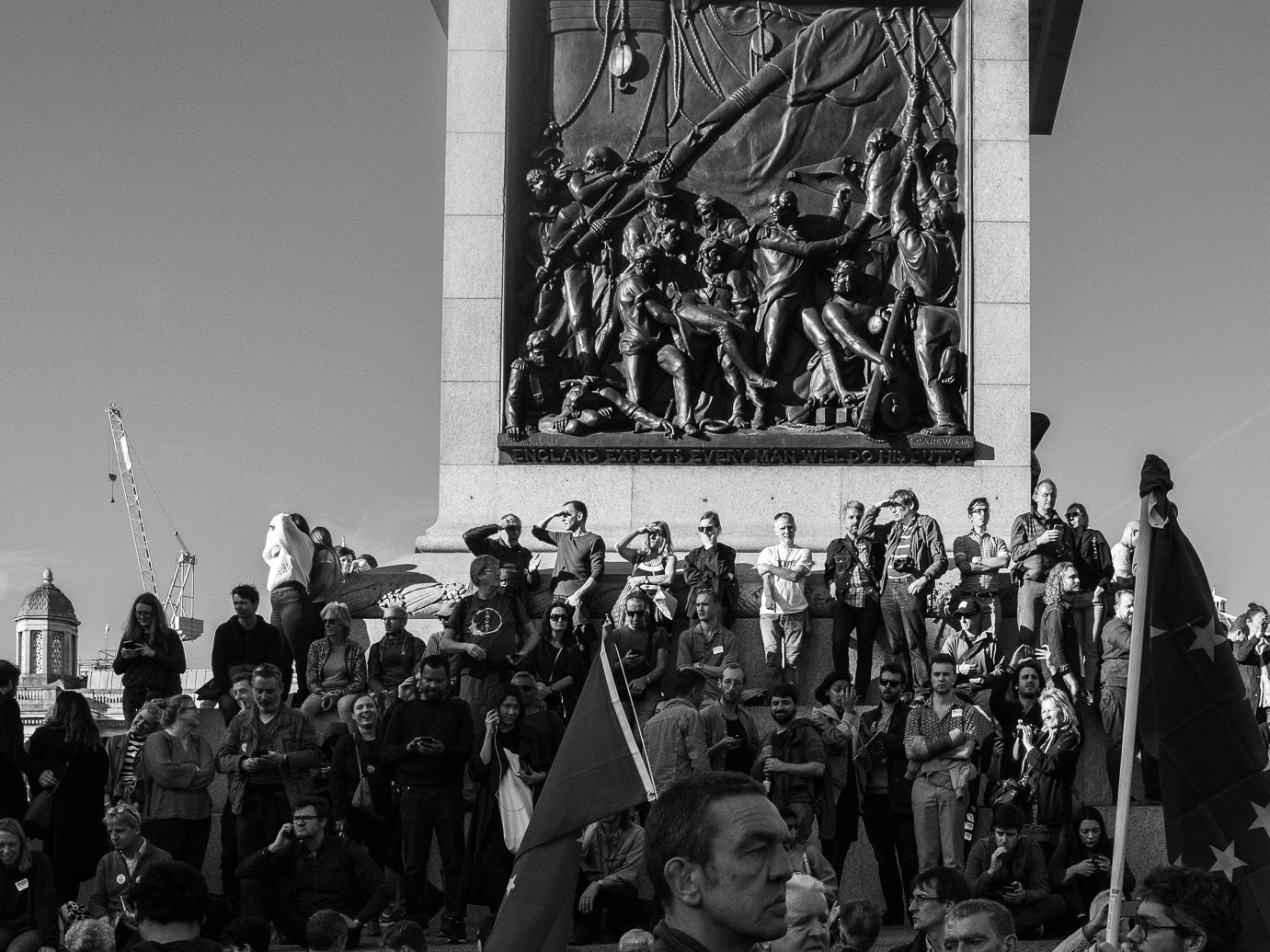It’s an irony of the digital age, when we can all communicate remotely, that it seems to have stirred a growing appreciation of urban public space – the city streets, parks and squares where we met as neighbours and citizens. It’s a further irony that coronavirus, and the rules on social distancing it has necessitated, only seems to have intensified the process.
 Trafalgar Square 2018 © Mario Washington-Ihieme
Trafalgar Square 2018 © Mario Washington-Ihieme
Take the anti-racism protests that were one of the stand out features of the year. The Black Lives Matter movement would be unthinkable without ‘virtual’ public space, which enabled the sharing of the video of George Floyd’s death at the hands of Minnesota police.
But the protests that followed were, first and foremost, protests of the urban public realm. They were public in the sense of taking place in public space. But they quickly also became about public space itself. Much police harassment and persecution of people of colour takes place in, or at least begins in, the public realm. The right to move relatively safely and freely through the public space is an important aspect of ‘white privilege’. So, an aim of the public demonstration was to reclaim the public realm for black citizens. And of course, the Black Lives Matter movement very quickly moved to challenge the way racism is often honoured in our public realm, in the form of statues, memorials and street names.
It’s true that traditions of public ‘demonstration’ go back a long way – at least as far back as the Chartist protests of 1830s Britain. And there is a particularly rich tradition of civil rights protest in the US. In that sense, this year’s protests were nothing new. But public demonstrations have grown in scale and frequency over the last decade. The 2017 Women’s March, with between five and seven million participants, was at that point the largest in US history, but more than 15 million are estimated to have taken place in the recent Black Lives Matters protests, albeit spread over several weeks and hundreds of towns and cities across the US. Public protests have similarly become much more a of feature of UK politics, with various anti- and pro-Brexit marches (around a million joined the 2018 People’s March), Extinction Rebellion protests and then Black Lives Matter demos following each other in quick succession.
Or take the success of the Greens in this year’s French municipal elections. Again, there was nothing completely new in this. Green parties have been winning municipal elections in Western Europe for some time. But the French Greens were able to capitalise on hopes and fears provoked by the pandemic to win city after city. Les Verts now run Marseille, Lyon, Bordeaux, Grenoble and Strasbourg, as well as mid-sized cities like Tours, Besancon, Annecy and Poitiers. The socialist Mayor Ann Hildago was easily re-elected in Paris, but on a green platform and with Green Party support.
And while the Green’s urban agenda is a broad one, the keystone is the commitment to creating a healthier, more sustainable and convivial public realm, free of the tyranny of the motor vehicle. In this they are part of a broader movement. Cities everywhere are re-allocating space from cars to pedestrians and cyclists.
Finally, take ‘Google City’. When Google’s affiliate, Sidewalk Labs, first announced its plans, back in 2017, to take over a large part of Toronto’s former docklands and develop a new city quarter using the latest technology, they clearly expected to be welcomed with open arms. Here was a chance to bring major investment into a rundown area and create an exemplary low carbon, affordable and data-driven digital city. But the proposal met with fierce public resistance and in May Sidewalk Lab announced it was giving up on the initiative. Public opposition was also an important factor. While critics of the scheme objected to the giving away of publicly owned land to a private developer, and the attempt, as they saw it, to circumvent the democratic planning process, opposition to a developer takeover of public space were central to the campaign against it.
Here too, we are not dealing with anything completely new. We have seen growing concern about the way that developers are privatising public space – a development that has now been the subject of books, seminars and many local campaigns. But Sidewalk Lab’s withdrawal represented what is the biggest and most significant victory for the opponents of against ‘POPS’ – privately owned public space.
I have identified three faces of the new politics of public space: the rise of protests taking place in public space, but also focused on creating a more equal public realm; the movement to reclaim city streets from cars; and campaigns against the privatisation of the public space.
These have not yet crystallised into a single movement – perhaps because we have not seen an intellectual or political leader who has seen the opportunity to weave these into a coherent story. But watch this space.
Ben Rogers (@ben_rog) is Director of Centre for London (@centreforlondon)
KEEP IN TOUCH: Subscribe to our newsletter and follow us on twitter